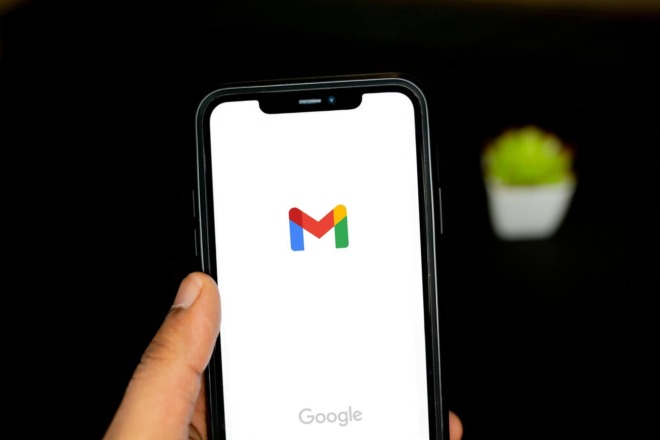From the moment of your business’s birth, you’ll present an image to the outside world that ties into your branding, or how others see your company. With a startup, you have an opportunity to drive your brand image from day one. While the way others perceive you still drives your narrative somewhat, you also have a lot more control over the message being delivered.
A brand image isn’t a stagnant thing. It grows and changes with the market, when the business gains experience, and as competition ebbs and flows. Think of your branding as a living part of your business that defines how the world sees you. Your image changes slightly over time, but the core values you espouse remain the same.
For startups, there are a series of tips that will take you from unknown to a brand on the mind of your target audience. Here are 17 quick ideas to get you started with branding:
1. Brainstorm Your Brand Name
Your brand name is an opportunity to make a positive impression. What does your brand name say about your company? Many startups struggle with choosing a name that hasn’t been used and describes their brand.
Gather all the leaders of your startup together for a brainstorming session. As fast as you can think, write out words associated with your brand goals, mission and the problems you’ll solve for customers.
Next, come up with synonyms for those words. Don’t use anything too complicated. You want your brand name to be memorable and easily recognizable. Think about some of the brands out there that clearly define what they do or the problem they solve, such as Planet Fitness or Forever 21. Planet Fitness is about creating a world where anyone can be fit. Forever 21 is about young, fresh clothing. Your brand name speaks volumes about you.
2. Choose a Message
Spend time thinking about what your brand message is. What do you stand for as a company and why? Look at the reasons you started the business. If your mission is helping a particular market segment, dig deep into why you want to help them and how. Your message is part of the outside image your brand projects, so be sure to give it lots of thought.
Marketing ties into your branding through the messages you share on social media, in online ads, in print advertising and even at events you attend or local promotions you offer. Each of these elements must consistently present the same information.
3. Design a Logo
Your logo says a lot about your brand, from the colors you use and the meaning behind them to the elements within the logo itself. Once you know your brand message, designing a logo becomes easier.
Think about some of the best logos you’ve seen and how they reflect the brand’s mission. For example, when you think about FedEx, you probably don’t immediately notice that the logo looks as though the letters are in motion. McDonald’s is known for its golden arches — when you see that logo, you know there is cheap, fast food there. Wendy’s has a hidden meaning in its logo with the word “Mom” hidden in Wendy’s collar.
Your logo is an integral part of your branding, since it shows up in everything you do. Take the time to dig in and find a logo that perfectly sums up your brand.
4. Set up a Twitter Brand Page
Twitter has millions of monthly active users and is an excellent place to get your feet wet with social media branding, because posts are short by limitations of the platform. Your first step in creating a brand presence on Twitter is setting up an account.
The appearance of your brand Twitter page should match your logo and even your website. When people land on your Twitter page, they should immediately recognize the appearance and personality of your brand as a whole. Again, consistency matters, so you want the message on your Twitter page to match your overall values as a company.
5. Pick a Difference
Think about how your brand is different than any similar brand out there. What makes you stand out? Once you choose that thing that makes you who you are, stick with it in all your marketing efforts.
Picture John Smith, a local entrepreneur, dissatisfied with the service he receives from local restaurants. John decides to open up his own eatery and offer the best service any restaurant ever offered. His customer service is what makes him stand out from the other local establishments. He might start by making a list of the ways competitors fail and then come up with a plan to improve in those areas.
6. Create a Style Guide
Consistency in your branding is of vital importance. Psychologists point to the fact that people must see your brand 15 times before they feel familiar with you. Your target audience must see and interact with your brand 15 times before they recognize your brand name. If you aren’t putting out consistent content, then you lose a chance to connect.
A style guide details the look of your branding, such as the colors you use, the logo, how content is laid out and even whether you abide by AP format or Chicago Manual of Style. Your style guide should outline everything about your brand, including the name of your business and preference in appearance, such as by full name or an acronym and even the capitalization.
7. Find Your Voice
Part of connecting with your audience is finding your voice as a brand. What is your brand’s personality? If you sell gadgets to Generation Z, then you may have a fun, casual vibe. On the other hand, if you’re selling stock shares to adults, then your personality needs to be more earnest.
You may even want to make your voice part of your style guide, so anyone creating content for your brand understands the tone you’re going for. Think about some of the brands you love. For example, if you see an ad from Lush, you expect a fun, natural vibe. Marketing from Wells Fargo is serious and reliable. What voice works best with your audience?
8. Start With Transparency
Consumers expect you to be authentic and transparent. A brand that is entirely transparent earns loyalty from about 94 percent of consumers. When you share where you source your materials, what your goals are and what your brand values are, consumers feel they can trust you in other areas.
9. Know Your Target Audience
When you first start your business, you probably think you know exactly who your target audience is. However, once you’ve gained your first few customers, it’s time to re-evaluate your audience. Look at who they are and poll them on their preferences. The better you get to know your audience, the better you can meet their needs.
Build a buyer persona that represents your typical customer. Run any branding efforts through the filter of your buyer persona and make sure the message resonates with that audience.
10. Get on Instagram
Instagram is one of the fastest-growing social media platforms today. Last year, Instagram hit over 1 billion monthly active users, an increase of 200 million in one year. Instagram is particularly popular with millennials, but Gen X is also heading to the platform.
Your brand should have a presence on Instagram, but understand the platform is meant to entertain through images. Photos of your products, clients doing exciting things and even video all translate well on the platform. Even though Instagram is a bit different than a blog, your brand image should still fall within specific guidelines, so it’s instantly recognizable.
11. Market Your Startup for Pennies
Most startups have a small budget for marketing. Getting a business off the ground is time-consuming and expensive. You may not have a lot of time or money left for advertising. However, getting the word out about your new business requires marketing.
Fortunately, there are several ways to combat the challenge.
- Hire contract marketers as you can afford them.
- Schedule social media posts through Hootsuite, Buffer or another posting management platform.
- Take on a marketing intern. They’ll gain valuable experience, and you’ll gain a knowledgeable student ready to try out their skills.
- Reinvest in your business by setting aside a marketing budget from your profits.
Find creative ways of marketing even when you’re on a tight budget and your brand recognition will soar.
12. Work on Your First Impression
You’ve probably heard the saying that you only get one chance to make a first impression. Your chance to make a good first impression is true of your business as well, but there are a variety of ways you make an impact on your customers.
If your business is online, then the user experience (UX) of your site is key to gaining and retaining customers. Your site should be easy to navigate and the checkout process straightforward and simple.
If you own a brick-and-mortar retail store, your employees are often the first point of contact for new customers. Train them thoroughly on how to greet people who come into the store and offer clear customer service policy guidelines.
Someone just exposed to your brand should walk away with a positive feeling.
13. Optimize Your Website
Google’s algorithms now look at how mobile-friendly your website is when choosing a rank for your page. That isn’t surprising, since mobile phone internet users hit 63.4 percent. The number of smartphone users is expected to continue increasing.
One thing you can do to increase traffic to your new website is making sure it is mobile-responsive. When users access your page via a mobile device, it should be just as easy to navigate as when they access it via a PC.
14. Guard Your Reputation
As a startup, you must gain the trust of both suppliers and customers. Your reputation starts as a blank slate. Protect that reputation by paying your invoices on time and going out of your way for customers.
Reviews sites such as Yelp! and Google Reviews make or break your business. If someone posts a negative review, seek a solution immediately and make notes on the review about what solution you offered. You may not be able to erase the negative review, but you can reduce its impact.
15. Create a Content Schedule
As mentioned before, starting a new company is time-consuming. It’s easy to let branding fall through the cracks, yet it’s a vital part of getting your company noticed. Create a content schedule for your marketing efforts and make sure each piece of planned content matches your brand goals and image.
Plan what content you’ll release over the next six months to a year. If something isn’t current when you come to that point in your schedule, you can always replace it with something trending. You can also add elements whenever you need. Having a plan keeps you accountable and moving forward during a challenging time in your company.
16. Invest in Professional Images
The images used in your branding should be specific to your product and services and beautiful, vivid images. Computer screens and smartphones now have high-definition screens. Consumers expect images that aren’t fuzzy or generic.
In a survey of marketing professionals, 91 to 100 percent stated their content utilized some type of visual real estate, such as images, infographics or videos. Relevant, vivid images bring your content to life and help users associate your brand with quality material.
17. Gather Feedback
After you’ve gained some regular customers, ask for feedback about your brand. Ask if your purpose is clear, where they’ve seen your brand mentioned and if there is anything negative related to your name and image. Allow for anonymous feedback and the responses will be more honest. You can learn a lot about your brand’s image by asking those on the outside of the company what they see.
Feedback is a valuable tool because it gives you an opportunity to change any negative images of your brand into something positive.
Building Brand From Go
The advantage of a startup is branding your company from scratch. You control the narrative and the image presented to the world. While some necessary steps remain the same no matter what type of business you own, keep in mind the target audience and the details about your company that differentiate you from your competitors.
Make a consistent effort to get the message out and help the world see your brand the way you want. With attention to your message and determination to reach consumers on an emotional level, your brand recognition will soar, and you’ll gain more customers than you ever thought possible.






